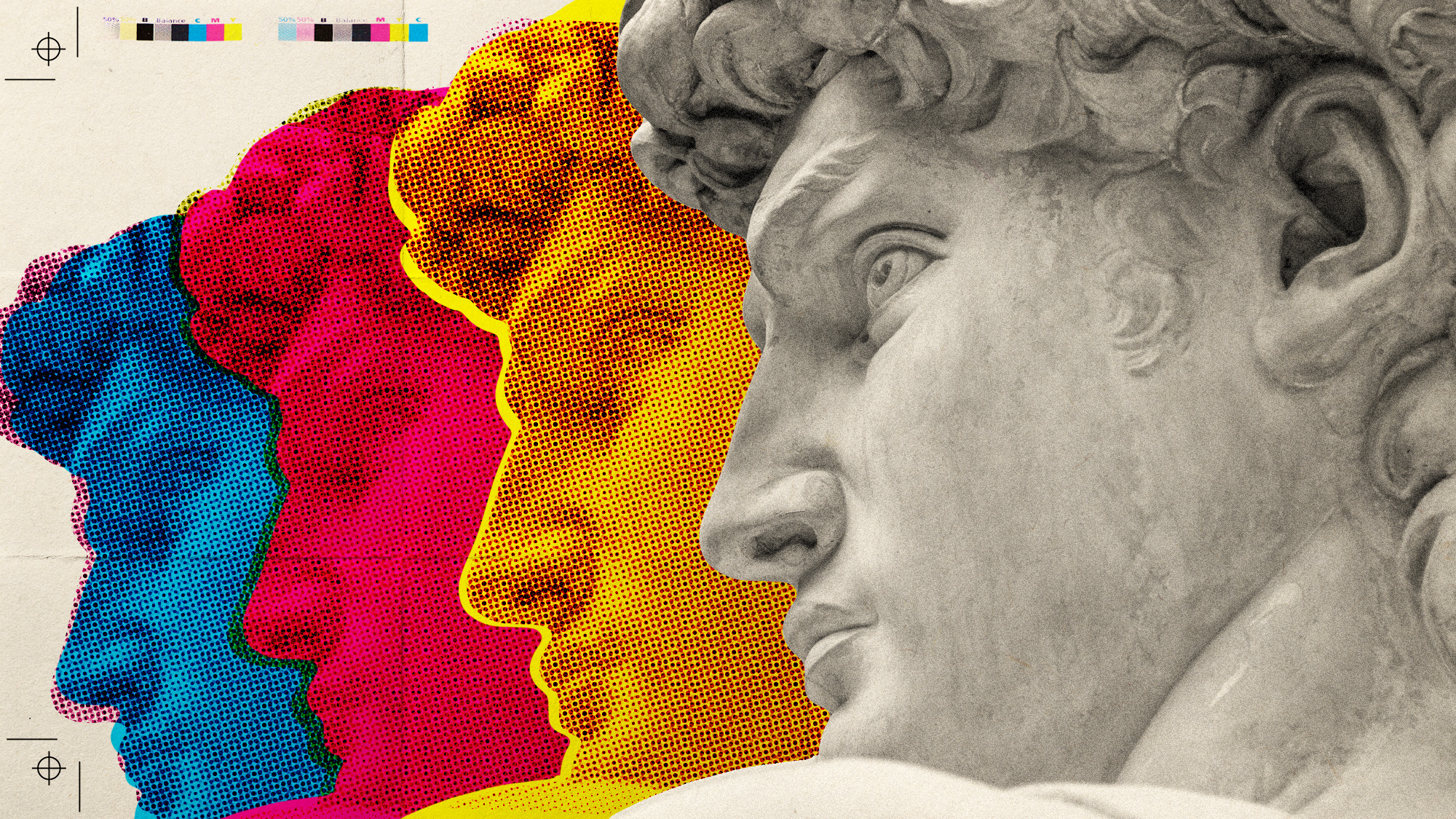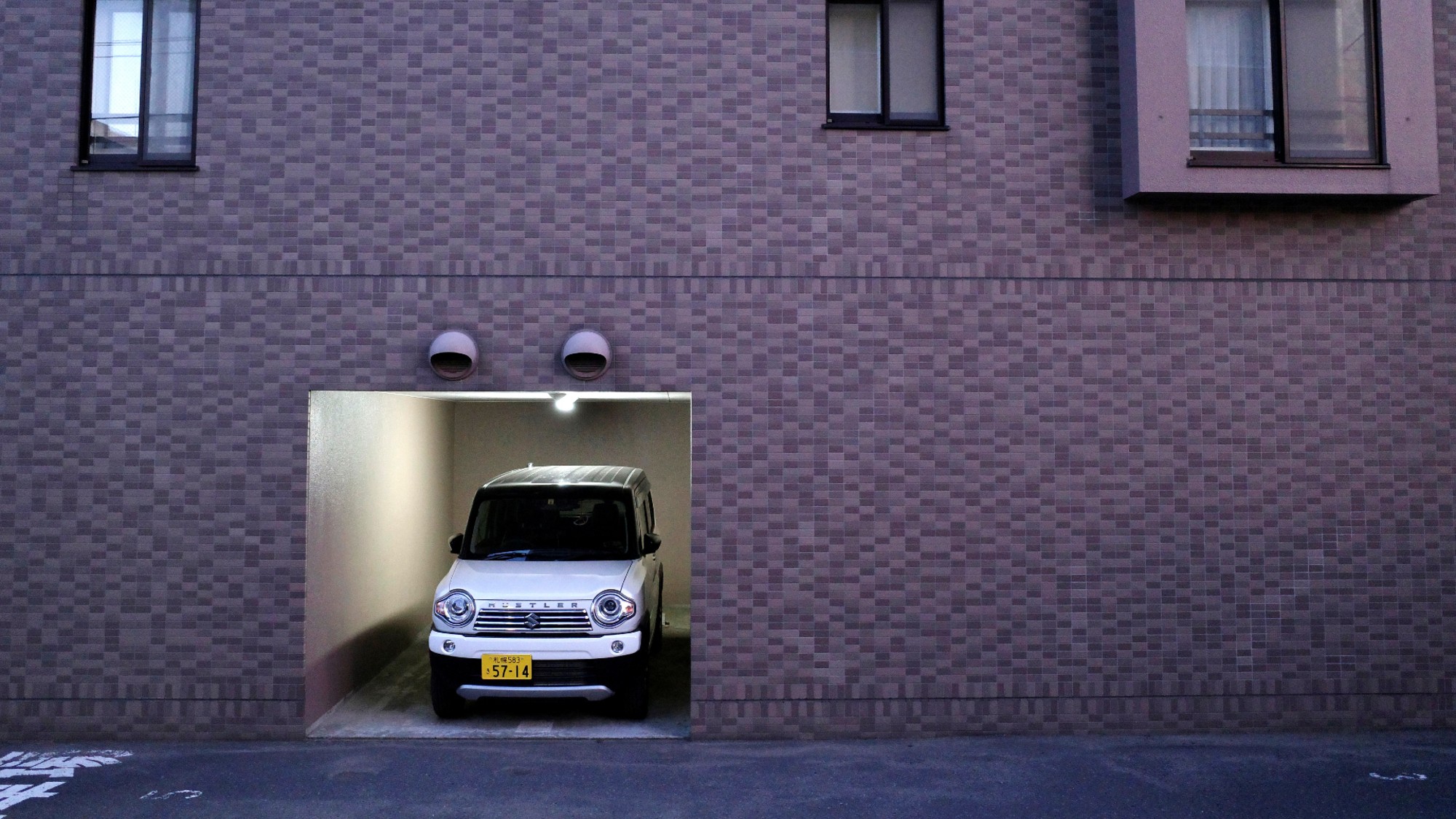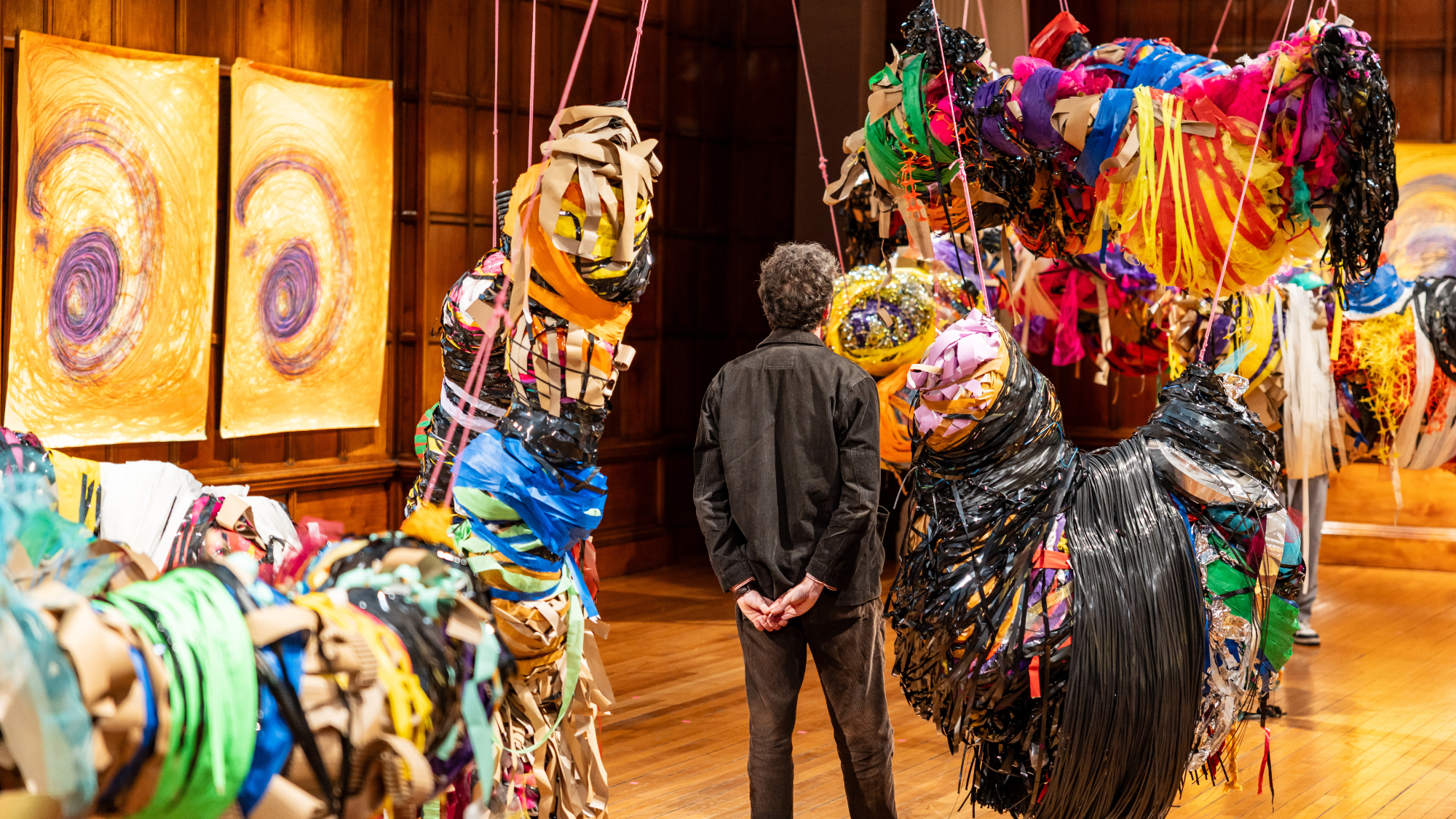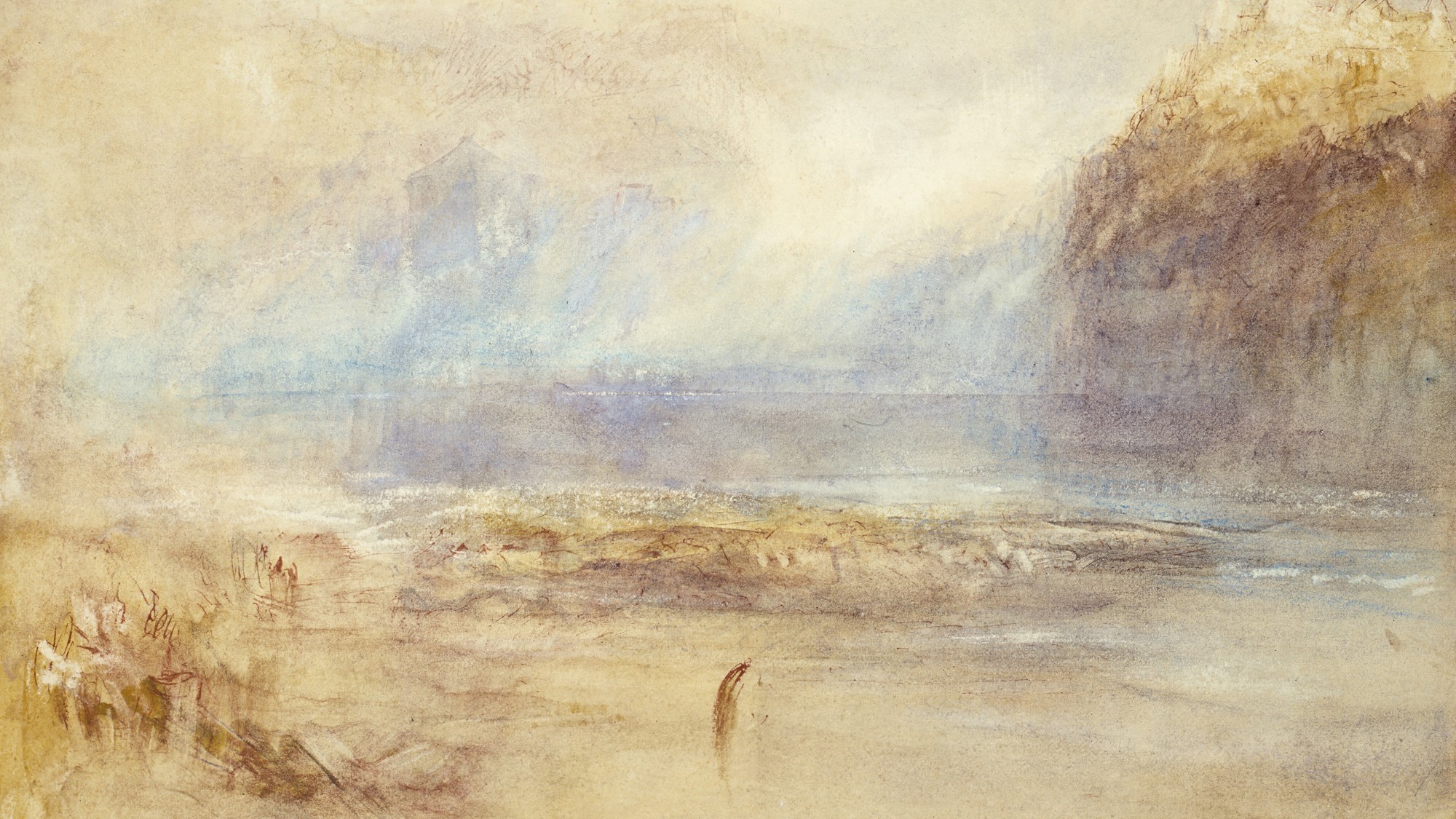The cultural fight over Michelangelo's David
Some in Italy are trying to stop what they consider 'debasing' use of the sculpture


Michelangelo's David is among the most famous pieces of Renaissance artwork and remains a well-known symbol of Italy. More than 1.4 million people visit the sculpture annually at Florence's Accademia gallery, according to American University. However, David has become embroiled in several controversies over its depiction of a nude male — and now one of them has struck the streets of Florence itself.
A recent report in The Associated Press describes how Italian cultural curators are becoming worried that the "marble statue's religious and political significance is being diminished by the thousands of refrigerator magnets and other souvenirs sold around Florence." Many of these souvenirs revolve around the sculpture's visible genitalia, the AP said, and the city streets often feature "street vendors and souvenir shop operators hawking aprons of the statue's nude figure, T-shirts of it engaged in obscene gestures, and ubiquitous figurines, often in Pop Art neon."
This is not the first time that people have been angered by the nude sculpture, including some beyond Italy's borders. In 2023, a Florida charter school made headlines after its principal was forced to resign following a Renaissance art lesson that featured the statue. But why are new concerns now being raised about the commercialization of David in Italy itself?
The Week
Escape your echo chamber. Get the facts behind the news, plus analysis from multiple perspectives.

Sign up for The Week's Free Newsletters
From our morning news briefing to a weekly Good News Newsletter, get the best of The Week delivered directly to your inbox.
From our morning news briefing to a weekly Good News Newsletter, get the best of The Week delivered directly to your inbox.
Why is David at the center of a fight?
The director of Florence's Accademia gallery, Cecilie Hollberg, has been working to try to defend David from those profiting off the sculpture's image. Many of these items are "debasing" to the heritage and culture of the statue, Hollberg said to the AP. Hollberg has been taking cases to court, arguing that this widespread usage of David's image violates Italy's cultural heritage code, "which protects artistic treasures from disparaging and unauthorized commercial use," the AP said. The Accademia has won hundreds of thousands of euros in these court cases since 2017, according to Hollberg.
The first instance of Hollberg defending David occurred when she sued "ticket scalpers using David's image to sell marked-up entrance packages outside the Accademia's doors," the AP said. Since then, the director of the gallery has gone after major brands, including GQ Italia, for using David's face on a model's body, as well as a bag from fashion brand Longchamp that highlighted the statue's genitalia.
Other actions have been taken to try to protect similar Renaissance artwork, per the AP, including legal proceedings against knockoffs of "Leonardo da Vinci's 'Vitruvian Man,' Donatello's David and Botticelli's 'Birth of Venus,'" the AP said. But despite Hollberg's efforts, many unauthorized uses of David — and other Renaissance pieces — can still be found throughout Florence.
What is the bigger picture?
The ongoing fight in Italy "[raises] important questions: Should institutions like the Accademia be the arbiters of taste, and do such decisions limit freedom of expression?" Euronews said. This is especially true when it comes to derivative works, Thomas C. Danziger, an art market lawyer based in New York, said to the AP. Danziger noted that acclaimed artist Andy Warhol created an entire series of paintings based on da Vinci's "The Last Supper," asking if it made sense to "prevent artists like Warhol from creating what is a derivative work?"
A free daily email with the biggest news stories of the day – and the best features from TheWeek.com
Some critics "view this as a land grab by the Italian courts to control and monetize artworks in the public domain that were never intended to be charged for," said Danziger. The debate over Italy's cultural code remains "hotly debated because it's unusually broad in scope, and ... essentially [extends] in perpetuity the author's copyright to the museum or institution that owns it," Euronews said.
As the fight over the Italian code continues, other European countries have made similar efforts to protect their cultural icons. This includes Greece, which in 2020 passed a law that "requires a permit to use images of historic sites or artifacts for commercial use and forbids the use of images that 'alter' or 'offend' the monuments in any way," the AP said.
But despite the success of Hollberg's lawsuits, art experts "warn that such an aggressive stance could backfire for Italy, perhaps even costing the country valuable revenue," Euronews said. The hostility "could discourage the licensing of the country's many iconic artworks, a significant source of capital, while also limiting the reproduction of masterpieces that serve as ambassadors for Italy on the international stage."
Justin Klawans has worked as a staff writer at The Week since 2022. He began his career covering local news before joining Newsweek as a breaking news reporter, where he wrote about politics, national and global affairs, business, crime, sports, film, television and other news. Justin has also freelanced for outlets including Collider and United Press International.
-
 Russia’s ‘weird’ campaign to boost its birth rate
Russia’s ‘weird’ campaign to boost its birth rateUnder the Radar Demographic crisis spurs lawmakers to take increasingly desperate measures
-
 Could smaller cars bring down vehicle prices?
Could smaller cars bring down vehicle prices?Today’s Big Question Trump seems to think so, but experts aren’t so sure
-
 2025’s most notable new albums
2025’s most notable new albumsThe Week Recommends These were some of the finest releases of the past year
-
 The best music of 2025
The best music of 2025The Week Recommends These were some of the finest releases of the past year
-
 Rob Reiner, wife dead in ‘apparent homicide’
Rob Reiner, wife dead in ‘apparent homicide’speed read The Reiners, found in their Los Angeles home, ‘had injuries consistent with being stabbed’
-
 10 upcoming albums to stream during the winter chill
10 upcoming albums to stream during the winter chillThe Week Recommends As the calendar turns to 2026, check out some new music from your favorite artists
-
 Holbein: ‘a superb and groundbreaking biography’
Holbein: ‘a superb and groundbreaking biography’The Week Recommends Elizabeth Goldring’s ‘definitive account’ brings the German artist ‘vividly to life’
-
 Nnela Kalu’s historic Turner Prize win
Nnela Kalu’s historic Turner Prize winTalking Point Glasgow-born artist is first person with a learning disability to win Britain’s biggest art prize
-
 Henri Rousseau: A Painter’s Secrets
Henri Rousseau: A Painter’s Secretsfeature Barnes Foundation, Philadelphia, through Feb. 22
-
 May your loved ones eat, drink and be merry with these 9 edible Christmas gifts
May your loved ones eat, drink and be merry with these 9 edible Christmas giftsThe Week Recommends Let them eat babka (and cheese and licorice)
-
 Turner: The Secret Sketchbooks – a fascinating portrait of the great painter
Turner: The Secret Sketchbooks – a fascinating portrait of the great painterThe Week Recommends BBC2 documentary examines the rarely seen sketchbooks of the enigmatic artist
